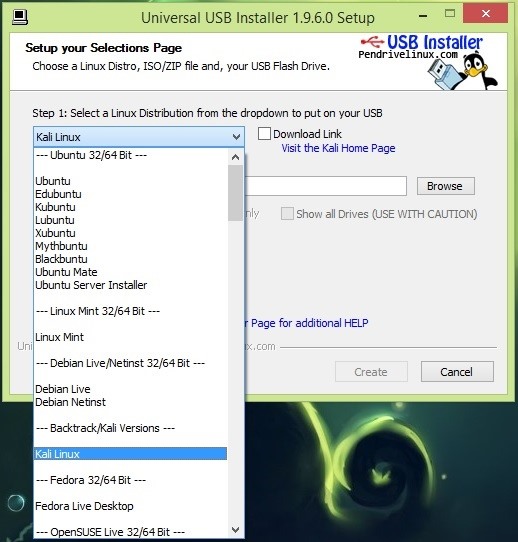

- #Kali linux usb fat32 how to
- #Kali linux usb fat32 for windows 10
- #Kali linux usb fat32 portable
- #Kali linux usb fat32 password
- #Kali linux usb fat32 iso
#Kali linux usb fat32 how to
How to Format USB Drive in kali Linux using disk utilty This is also a good way to format your Pendrive in Kali Linux as it allows you to format your Pendrive in Kali Linux with the help of graphics, not just using the command line. How to Format a USB Drive in Kali Linux || Disk Utility

#Kali linux usb fat32 password
#Kali linux usb fat32 for windows 10

Now we need to change the file system type of persistence to ext4 In the Kali boot menu, select Live system (persistence, check /prst) and press Enter key Restart your Mac and keep the option key pressed. In drive, select the same device which we had observed in the previous step (in this example disk2s2)Īfter some time, UNetbootin will notify Installation Complete In this example, the device name is disk2s2 Step 5. Note down the device name of the KALI partition. If you don’t want this, you may use the entire space in 2nd partition) I like to transfer files using the pen drive to other machines. Updating and upgrading Kali will fill up this partition pretty fast, so I have kept 15 GBģrd partition (this is optional. Open Disk Utility and format the USB to FAT32 Create/configure a persistence partition.
#Kali linux usb fat32 iso
Copy the KALI iso in Live USB mode to the USBĤ. Format and create partitions on the USB.ģ. Kali Linux does allow Live USB and with a few steps we can add persistence to our setup.Ģ. The Live USB would have to run a series of compatibility tests to ensure that everything would work fine on a machine. Also the Live USB will be comparability slow in boot up. The Live USB does not have any security mechanism to protect anyone from accessing your data.

#Kali linux usb fat32 portable
Though a Live USB is non-destructive (i.e does not make any changes to the hard drive) and it’s very portable (allows me to run the Live USB operating system on any available system), I observed there are some security issues as well. Unknown to many, there is a data persistency mode in the Live session where you can make changes and save files to your USB drive and the data will persist even after shutting down the live session. A LiveUSB gives me the opportunity to play and test out a Linux distro without making any changes to my computer.


 0 kommentar(er)
0 kommentar(er)
